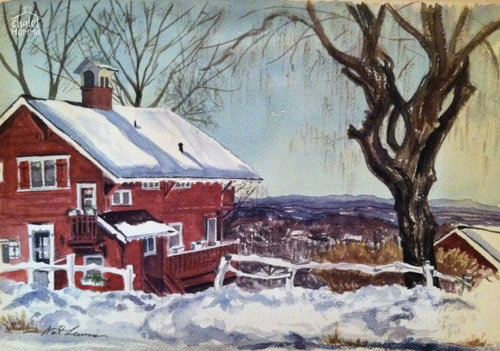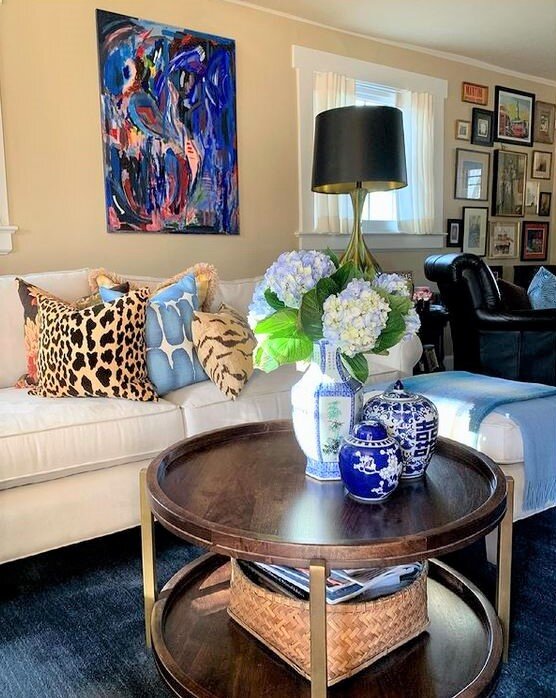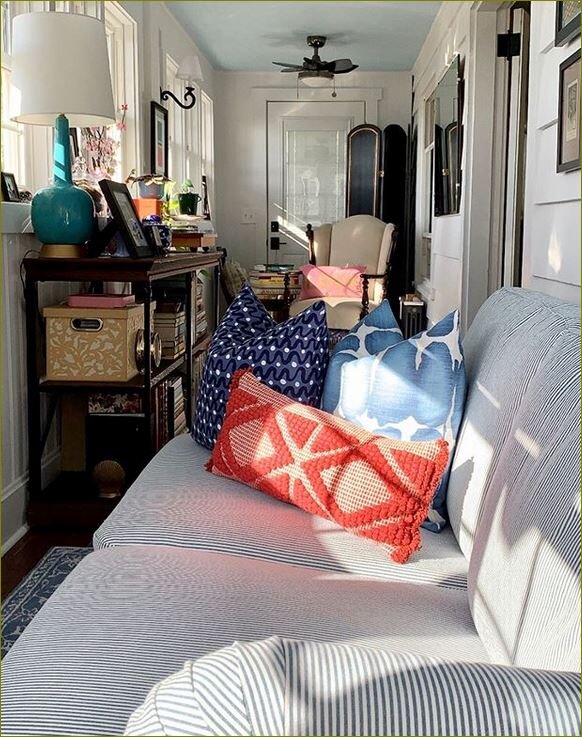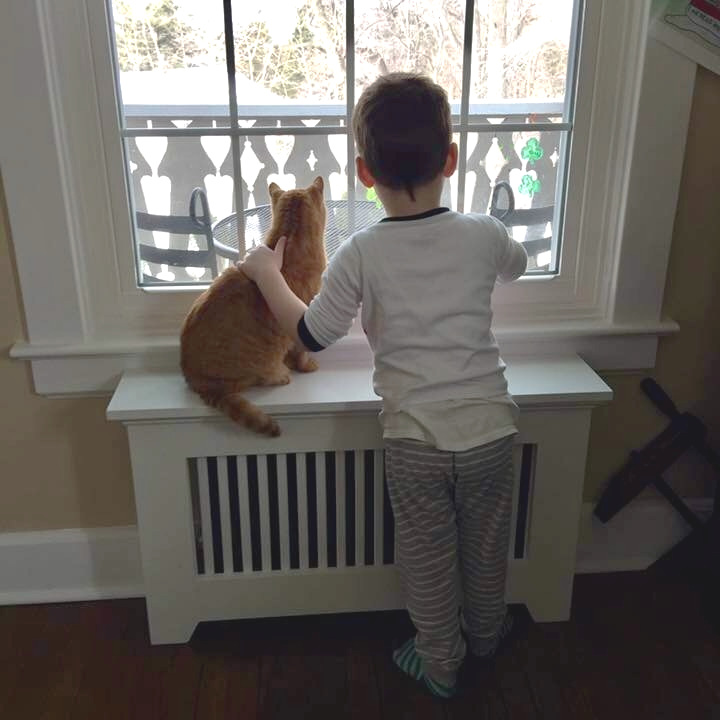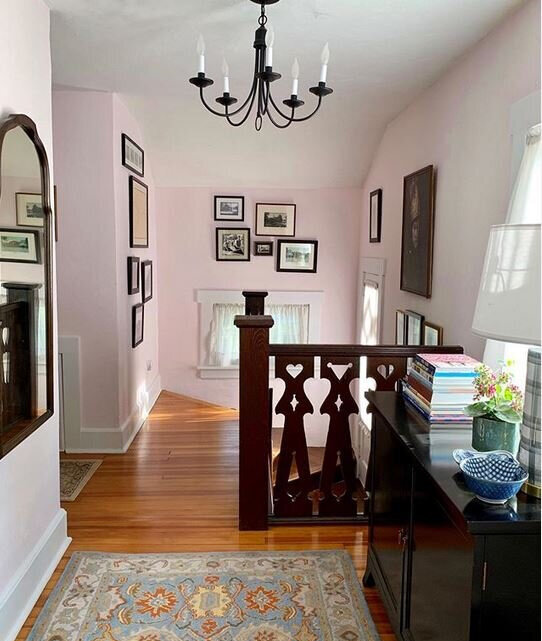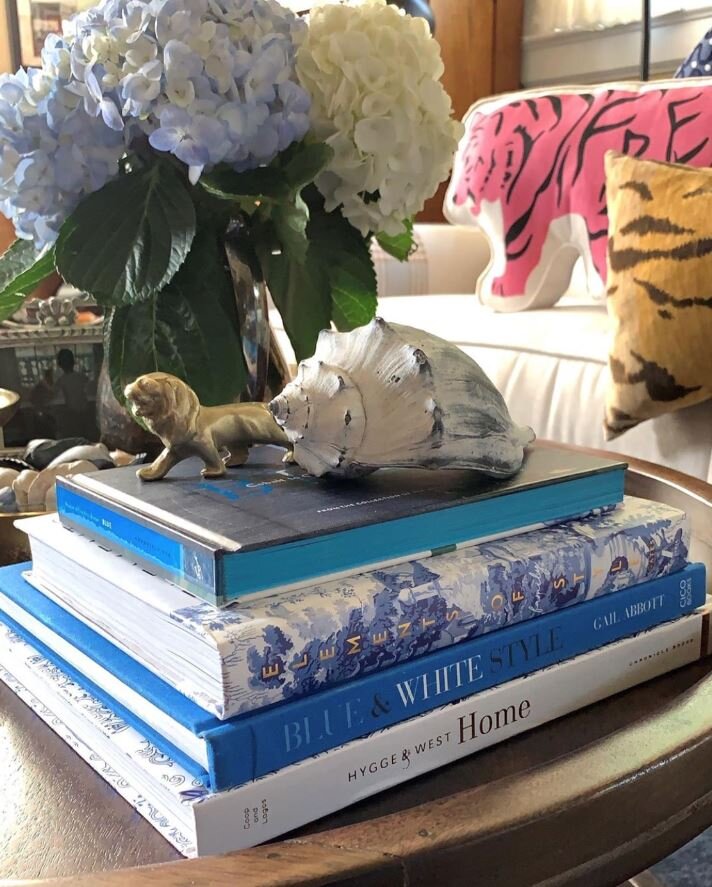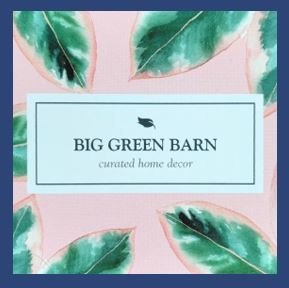Colonial Williamsburg, Va Visit (part 2)
/As I shared last week my sister and I took a trip to Colonial Williamsburg, VA. in September. I wish I lived closer it’s truly a special place. Our Dad Jim loved it there and so do his girls!
We arrived Thursday September 19th and in part 1 I shared days 1 and 2. This week I’m sharing days 3 and 4 of our visit. On Saturday morning we drove directly to Colonial Williamsburg bypassing the visitors center - knowing we could park our car behind Christiana Campbell’s Tavern where we were dining that evening. There are streets that allow car traffic.
It was fabulous being on Duke of Gloucester Street so early in the day.
Since we’d already toured the first half of the street yesterday - we started our day at the Robert Carter House. We met the docent on the side porch. We ended up having a private tour when no others showed up. Colonial Williamsburg is using the Carter home for research by studying the constructions and renovations of the structure. Look at this door - one side is 6 panels on the interior room side and the other side facing the entry hall is 4 panels. They were married with nails to each other. Another interesting fact carpet looms produced 27” wide width of carpeting. So these pieces were bound together to make full rooms width and for many years this was the method for creating wall to wall carpeting.
Oh the wonderful George Wythe House it’s filled with colorful wallpapers and beautiful furnishings. I took this same image from this same position when I was in Williamsburg in 2008 with my husband.
After the Wythe house we popped back over to the Governor’s Palace so my sister could walk through the Boxwood Maze.
After lunching outside at Chowning’s Tavern Garden we toured Bruton Parish Church.
The Church was established in 1674. In 1678, Colonel John Page,a wealthy colonist, donated a plot of land about 144 feet by 180 feet and £20 sterling for building a brick church and for the surrounding churchyard. That structure was undersized for the need of the community and Governor Alexander Spotswood drafted plans for the structure: a cruciform-shaped church (the first in Virginia)75 feet long, 28 feet wide, with 14½-foot long transepts (wings.) Construction began under the watchful eye of James Blair, rector from 1710 to 1743 and also president of William and Mary. The present structure was completed in 1715.
Next we stopping at the Courthouse. We enjoyed the most marvelous talk. The docent shared so many interesting facts. The courthouse once housed two separate court systems, one being the James City County Court, responsible for carrying out county cases, and the other, the Hustings Court, responsible for the city of Williamsburg’s cases. The courthouse was where Benjamin Waller read the Declaration of Independence aloud on July 25, 1776, after it arrived from Philadelphia. (I wished I had a photo of the docent!)
We walked back across Duke of Gloucester Street and walked around an open market. We weren’t able to tour the Magazine because it’s under major restoration currently. But, we were able to visit the guard house. The young soldier in the photo below gave the most incredible talk. He spoke about the expansion of the Colonies and America and how during the Revolution we always thought the Colonies cut off ties with England and didn’t receive goods. But, that was not true. America was in no way fully manufacturing items to sustain daily life.
The Magazine was constructed in 1715 as a storage facility for arms and ammunition dispatched from London for the defense of the Colony.
The delightful docent in the Weaver Shop is originally from New Jersey. She advised the length of time it took to weave even the smallest piece of fabric therefore during the Revolution the colonies were in fact still importing fabric from England.
We shopped at: Tarpley, Thompson & Co., William Pitt Store, Prentis Store and John Greenhow.
Of course we stopped in at the Williamsburg Inn Restoration Bar for a yummy cocktail before heading to Christiana Campbell’s Tavern for our 7pm dinner reservation. The meal was delicious in a marvelous setting and because we drove we were able to truly relax and enjoy dinner.
On our final full day we visited the Art Museums of Colonial Williamsburg. We enjoyed historic furniture, folk art, ceramics, pottery, as well as a great side by side slide show of Colonial Williamsburg in the 1920’s prior to the Rockefeller led restoration. We enjoyed lunch in the cafe. before walking to The Wren Building on the campus of William and Mary and then popping into some of the Market Square Shops.
We walked over to The Wren Building on the William & Mary campus and into some of the Merchant’s Square Shops before heading back to our Air BnB to relax and change for dinner.
Our dinner at the Fat Canary was brilliant. Our server recommended wine pairings to complement our dishes. If you’re in the area enjoy this exceptional experience for yourself!
I didn’t bring home much but I love a few postcards for my collection (I have from almost everywhere I go). I have a new key-chain with the Williamsburg crest on it and I bought a Christmas ornament. I love these apothecary jars Once home I scoured Etsy and came across a Colonial Williamsburg booklet for the entire campus and one for the Governor’s Palace as well as the book A Window on Williamsburg. All three of these items were in my house growing up. I don’t know what happened to them - and I’m thrilled to have found these replacements. I also sewed two pillow slipcovers for my sister from fabric she purchased from Tarpley, Thompson & Co. which is part of the Colonial Williamsburg Collection.
To say this was a marvelous trip is an understatement. I love spending time with my sister and I am blessed to be able to enjoy many adventures with her. Til next time friends I’ll see you over on Instagram be well.

